Key takeaways:
- Gamification enhances student motivation and engagement by incorporating game elements like point systems, rewards, and friendly competition.
- It improves information retention and collaboration among students through interactive and challenging activities, transforming learning into a communal experience.
- Implementing gamification effectively requires a balance between competition and collaboration, considering diverse learning styles to ensure inclusivity.
- The future of gamification in education may involve personalized learning experiences through technology, but measuring its success must go beyond engagement metrics to truly assess educational outcomes.

What is gamification in learning
Gamification in learning refers to the integration of game elements and principles into educational environments. I’ve often seen this approach bring a spark of excitement to students who might otherwise feel disengaged. Have you ever noticed how a simple point system or a badge can transform the atmosphere of a classroom?
When I first encountered gamification in my own learning experiences, I was genuinely surprised by how motivating it could be. I remember participating in a workshop where we earned points for completing tasks, and the competitive spirit made even the most mundane lessons feel like an engaging challenge. It’s fascinating to realize how these game-like elements can help learners stay focused and invested in their education.
At its core, gamification leverages our natural desire for achievement and recognition. This strategy can encourage collaboration and foster a sense of community among students. Reflecting on my own experiences, I’ve grown to appreciate how the small rewards and milestones can make a significant difference in retaining knowledge and boosting confidence.
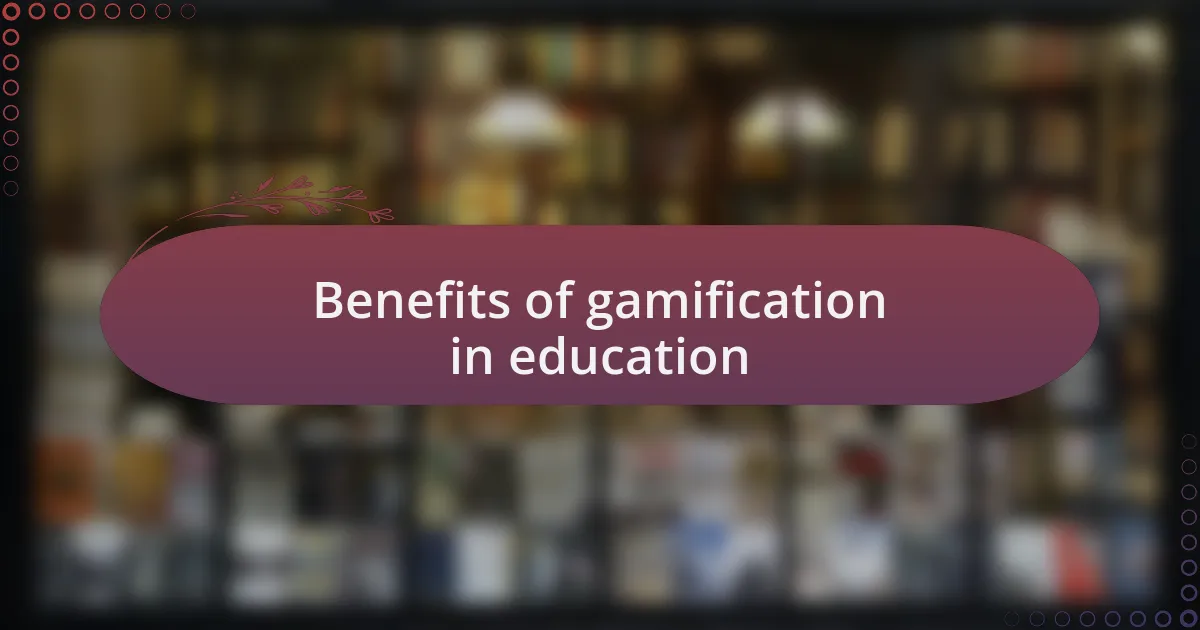
Benefits of gamification in education
One of the most notable benefits of gamification in education is its ability to enhance student motivation. I remember when my school integrated a leaderboard for project submissions, and how it ignited a friendly competition among classmates. Suddenly, students who typically flew under the radar were striving to push their limits and improve their performance. Isn’t it incredible how a little competitive spirit can spark such enthusiasm for learning?
Another advantage of gamification is its capacity to improve retention of information. In my experience, games often require players to recall facts or strategies to advance. For instance, when we played a trivia-based learning game designed for history lessons, it felt less like studying and more like a fun challenge. This engaging format not only made the learning process enjoyable but also helped solidify the information in our minds.
Furthermore, gamification promotes collaboration and teamwork. I vividly recall group projects where points were awarded for collaboration and problem-solving together. The excitement of working as a team toward a shared goal made us more invested in each other’s success. Have you ever worked on something with friends and found that it was less about the destination and more about the journey? That’s precisely what gamification brings to an educational setting—it transforms learning into a collective adventure.
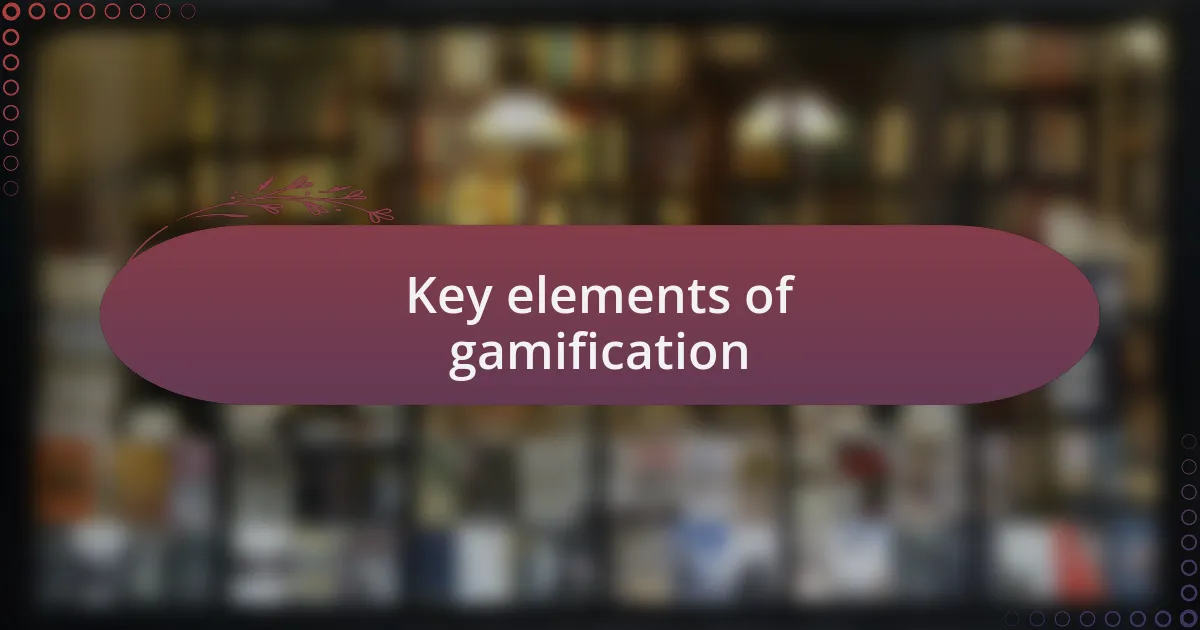
Key elements of gamification
Key elements of gamification hinge on the principles of engagement, motivation, and feedback. Take, for instance, the use of points and rewards systems. I remember one class where we earned points for every activity completed. It was exhilarating to see those points accumulate, and I found myself eagerly participating just to see how high I could climb on the class leaderboard. Isn’t it fascinating how a simple reward can shift the way we interact with learning?
Another critical component of gamification is storytelling. In a recent workshop on educational games, we delved into how narratives can immerse students in the material. I recall a history project where we had to create a story around a historical event, turning facts into characters with emotions and motivations. This not only helped me understand the content better but also made it feel personal, almost as if I was living it myself. Have you ever been captivated by a story so much that you lost track of time? That’s the essence of engaging educational narratives.
Lastly, the element of challenge plays a significant role in gamification. In one of my math classes, we faced timed puzzles that tested our problem-solving skills. The thrill of racing against the clock added a layer of excitement and urgency—I wasn’t just solving equations; I was embarking on an adventure. This kind of challenge not only keeps learners on their toes but also encourages them to take risks and grow. Don’t you think embracing challenges is where true learning happens?
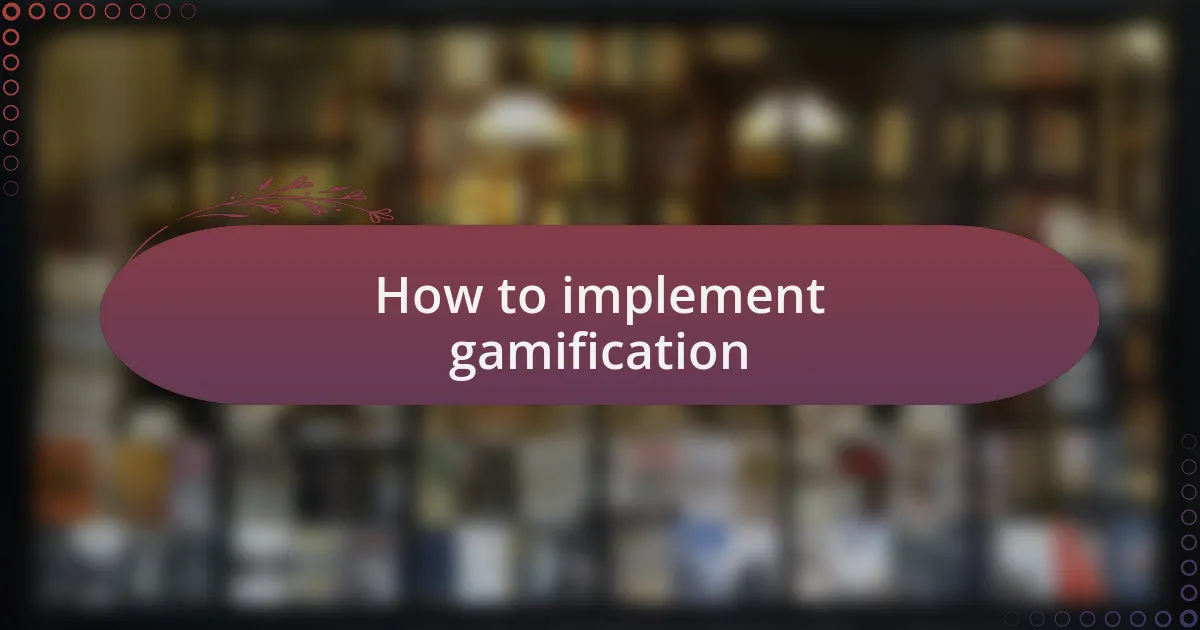
How to implement gamification
When implementing gamification, the first step is to integrate a clear rewards system. I remember when my team used a digital badge system for our project milestones. Each completed task earned us a badge that was shared on a common platform, sparking friendly competition. It made completing those tasks not just necessary but something we all looked forward to—who doesn’t love a little recognition, right?
Utilizing storytelling is another approach that can elevate the learning experience. I once participated in an interactive workshop where we had to develop our own game narrative while learning about environmental science. We had to build characters based on real-life issues like pollution and climate change. It wasn’t just about facts; it was about creating empathy for our characters and their struggles. Have you ever noticed how engaging a narrative can make complex topics easier to comprehend?
Lastly, a challenge that aligns with learners’ skills is essential. I recall a coding bootcamp where we tackled real-world problems in a competitive format. This wasn’t just about getting the right answers; we were racing each other to find innovative solutions. The thrill of competition fueled my motivation. It makes you wonder, doesn’t it? How can a little challenge turn a mundane task into an exhilarating experience?

My experience with gamification
Thinking back on my experiences with gamification, I can’t help but recall the sense of accomplishment I felt after a workshop where we used game mechanics to tackle math problems. As teams raced against each other to achieve the highest score, the air buzzed with excitement. It was fascinating to see how a little competition could elevate my focus and transform math from just another subject into a thrilling challenge.
One striking instance was during an online course where we earned points for every quiz completed. The leaderboard added a subtle layer of pressure, and I found myself striving to climb those ranks. It reminded me of my childhood days playing video games, where gaining levels felt like a mark of progress. Who knew that the same thrill could be applied to learning?
However, not every experience was perfect. In another scenario, a mandatory game-based assignment felt forced, which detracted from the learning process. That made me realize that gamification, while beneficial, requires thoughtful design. Have you ever participated in something that felt more like a chore than an opportunity for growth?
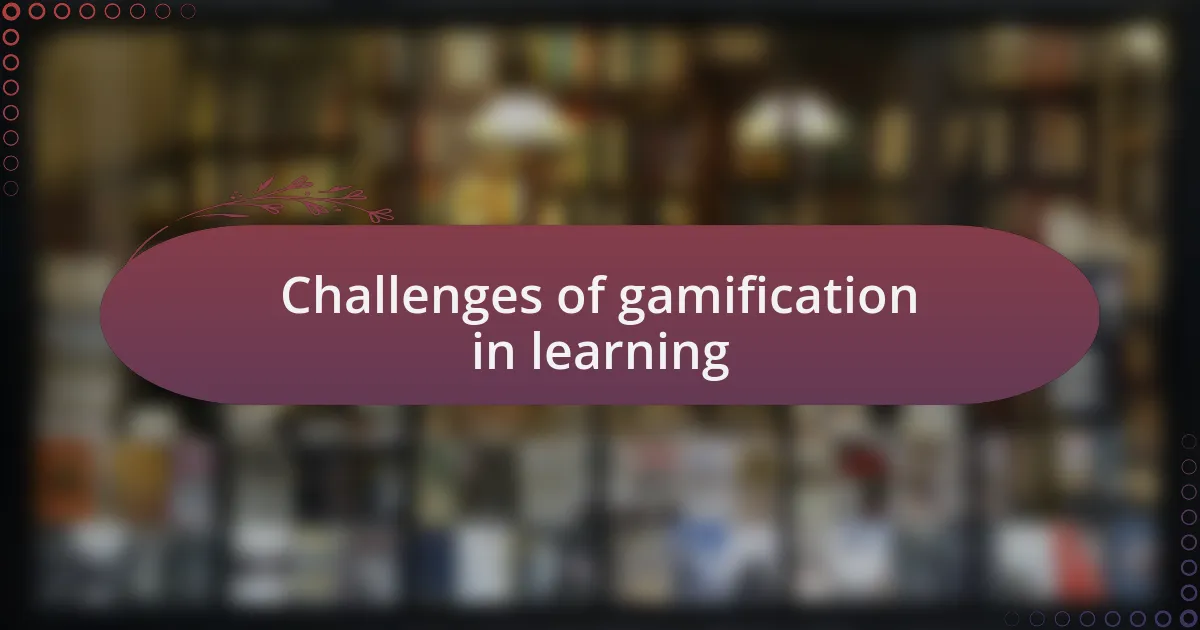
Challenges of gamification in learning
A significant challenge I encountered with gamification in learning is its potential to overshadow the educational content. I remember a workshop where we played a game instead of delving deeply into the subject matter. The excitement was palpable, but when I looked back, I realized that the game mechanics had taken precedence over understanding the core concepts. Does the fun sometimes distract us from truly learning?
Moreover, not all students thrive in a competitive environment. I witnessed peers become anxious or disengaged when faced with leaderboards or point systems. Their journey through learning felt more like a race than an exploration. Have you ever felt that pressure, where the stakes of a game overshadow the joy of discovery? It’s essential for educators to balance competition and collaboration, ensuring that every student feels included.
Finally, I found that the one-size-fits-all approach often falls short. When a gamified element doesn’t resonate with everyone—like a game that lacks variety or depth—it can alienate some learners rather than motivate them. I’ve seen students who excel in traditional learning methods struggle with game formats. How can we ensure that gamification enhances learning for everyone, not just those who thrive on competition?
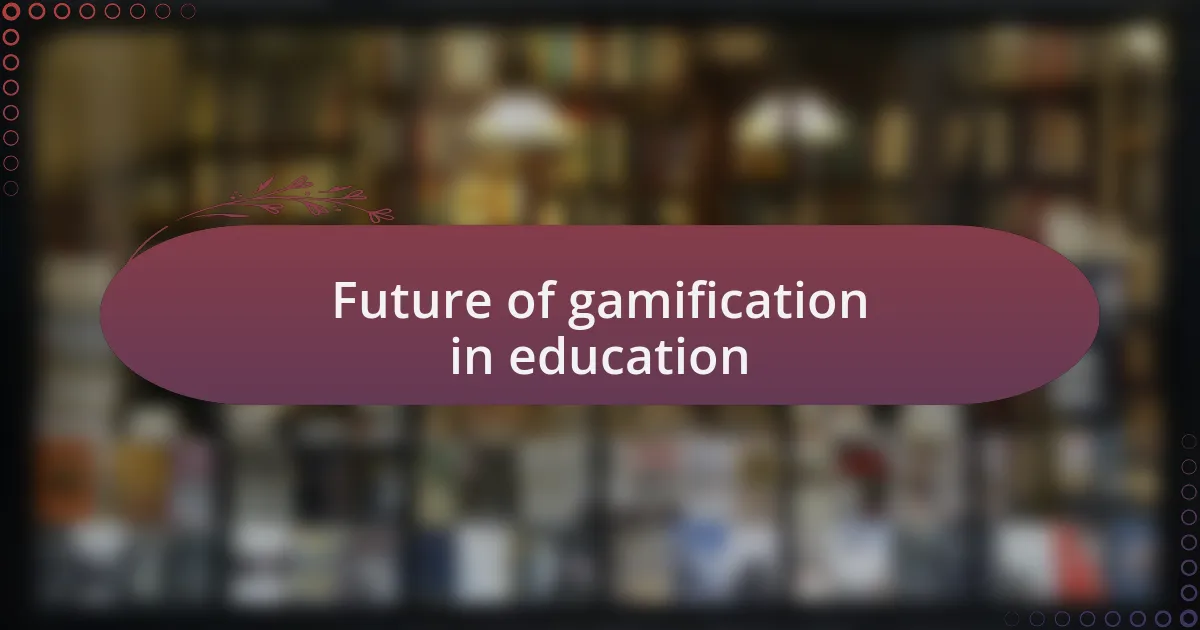
Future of gamification in education
The future of gamification in education holds immense potential for personalized learning experiences. I’ve thought about how advancements in technology could allow for more adaptive gamified systems that cater to individual student needs. Imagine a platform that adjusts challenges based on a learner’s progress, offering unique paths that keep engagement high—wouldn’t that revolutionize our approach to education?
As I envision the next decade, I can’t help but feel excited about integrating virtual and augmented reality into gamified learning. I recall a field trip I took where we explored historical sites, and I think to myself: how much more immersive would that experience be if we could interact with these places through a gamified lens? If students can experience ancient history or complex science concepts interactively, the impact on their understanding could be profound.
However, there’s a vital conversation to continue: how do we measure the success of gamification effectively? Relying solely on engagement metrics might give a skewed perspective on learning outcomes. I often wonder, are we prepared to shift our evaluation methods to truly grasp the educational benefits that gamification can provide? The answers to these questions will shape the future trajectory of gamified education, pushing us toward a more holistic understanding of student success.